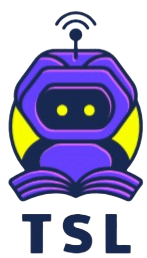
Data Structures and Algorithms in Java
Master data structures and algorithms to build a strong foundation in efficient software development. This comprehensive guide is essential for aspiring software engineers, computer scientists, and technology enthusiasts who want to solve complex problems and write high-performance code. This is a sample course syllabus and may be subject to changes depending on user needs.
Why Study Data Structures and Algorithms?
Data structures and algorithms are fundamental to computer science and programming because they help you:
- Organize Data Efficiently: Choosing the right data structure can significantly improve the performance of your program. For instance, using a hash table can reduce search time from linear to constant time.
- Optimize Solutions: Algorithms provide the steps needed to solve problems in a way that is both efficient and effective. Understanding different algorithms allows you to choose the best one for a given problem.
- Improve Problem-Solving Skills: Learning data structures and algorithms helps you develop logical thinking and problem-solving skills, which are critical in any technical field.
Course Description:
Learn fundamental data structures and algorithms with Java in this comprehensive course. Students will design, analyze, and implement efficient algorithms and data structures to tackle computational problems. Covering both theoretical concepts and practical implementations, this course offers a solid foundation in computer science.
Course Objectives:
By the end of this course, students will be able to:
- Understand the importance of data structures and algorithms in problem-solving.
- Implement basic and advanced data structures in Java.
- Analyze the time and space complexity of algorithms.
- Design efficient algorithms for various computational problems.
- Apply data structures and algorithms to real-world problems.
Prerequisites:
- Basic Java Knowledge: A foundational understanding of Java programming is essential. If you’re comfortable with concepts like loops, conditionals, and functions, you’re ready to begin.
- Curiosity and Persistence: Data structures and algorithms can be challenging, but with curiosity and persistence, you’ll find them incredibly rewarding. This course will encourage you to think critically and approach problems methodically.
Course Outline:
Week 1: Introduction to Data Structures and Algorithms
- Course overview and objectives
- Importance of data structures and algorithms
- Overview of Java syntax and basic programming concepts
- Introduction to complexity analysis (Big O notation)
Week 2: Arrays and Linked Lists
- Arrays: Definition, operations, and applications
- Linked Lists: Singly, doubly, and circular linked lists
- Implementation of linked lists in Java
- Time complexity analysis of array and linked list operations
Week 3: Stacks and Queues
- Stack: LIFO structure, operations, and applications
- Queue: FIFO structure, operations, and applications
- Implementation of stacks and queues using arrays and linked lists
- Application of stacks and queues in algorithms (e.g., balancing parentheses)
Week 4: Recursion and Backtracking
- Recursion: Concept, advantages, and disadvantages
- Implementation of recursive algorithms in Java
- Backtracking algorithms and their applications
- Classic problems: N-Queens, Maze Solving
Week 5: Trees and Binary Trees
- Introduction to trees: Terminology and properties
- Binary trees: Definition, traversal (in-order, pre-order, post-order)
- Binary Search Trees (BST): Insertion, deletion, and search operations
- Balanced trees: AVL Trees and Red-Black Trees (overview)
Week 6: Heaps and Priority Queues
- Introduction to heaps: Max-heaps and min-heaps
- Heap operations: Insertion, deletion, and heapify
- Priority queues: Implementation using heaps
- Applications of heaps (e.g., heap sort)
Week 7: Hashing and Hash Tables
- Hashing: Concept, hash functions, and collision resolution techniques
- Implementation of hash tables in Java
- Applications of hash tables: Caching, symbol tables, and dictionaries
- Analysis of hashing techniques (linear probing, chaining)
Week 8: Graphs and Graph Algorithms
- Introduction to graphs: Terminology, representation (adjacency list, matrix)
- Graph traversal algorithms: Depth-First Search (DFS) and Breadth-First Search (BFS)
- Shortest path algorithms: Dijkstra’s and Bellman-Ford
- Minimum spanning trees: Prim’s and Kruskal’s algorithms
Week 9: Sorting and Searching Algorithms
- Sorting algorithms: Bubble sort, insertion sort, selection sort, merge sort, quicksort
- Analysis of sorting algorithms (time and space complexity)
- Searching algorithms: Linear search, binary search
- Implementation of sorting and searching algorithms in Java
Week 10: Dynamic Programming
- Introduction to dynamic programming: Concept and methodology
- Classic dynamic programming problems: Fibonacci sequence, knapsack problem, longest common subsequence
- Memoization vs. tabulation
- Implementation of dynamic programming solutions in Java
Week 11: Advanced Data Structures
- Introduction to advanced data structures: Trie, Segment Tree, Fenwick Tree
- Implementation of advanced data structures in Java
- Applications of advanced data structures in problem-solving
Week 12: Course Review and Final Project
- Review of key concepts and algorithms covered in the course
- Discussion of best practices in coding and algorithm design
- Final project: Implementation of a complex algorithm or data structure
- Presentation and peer review of projects
By the end of this course, you will have the skills to analyze problems, select the most appropriate data structures, and design efficient algorithms. These are critical skills not just for academic success, but for a career in software development or any technology-related field.

